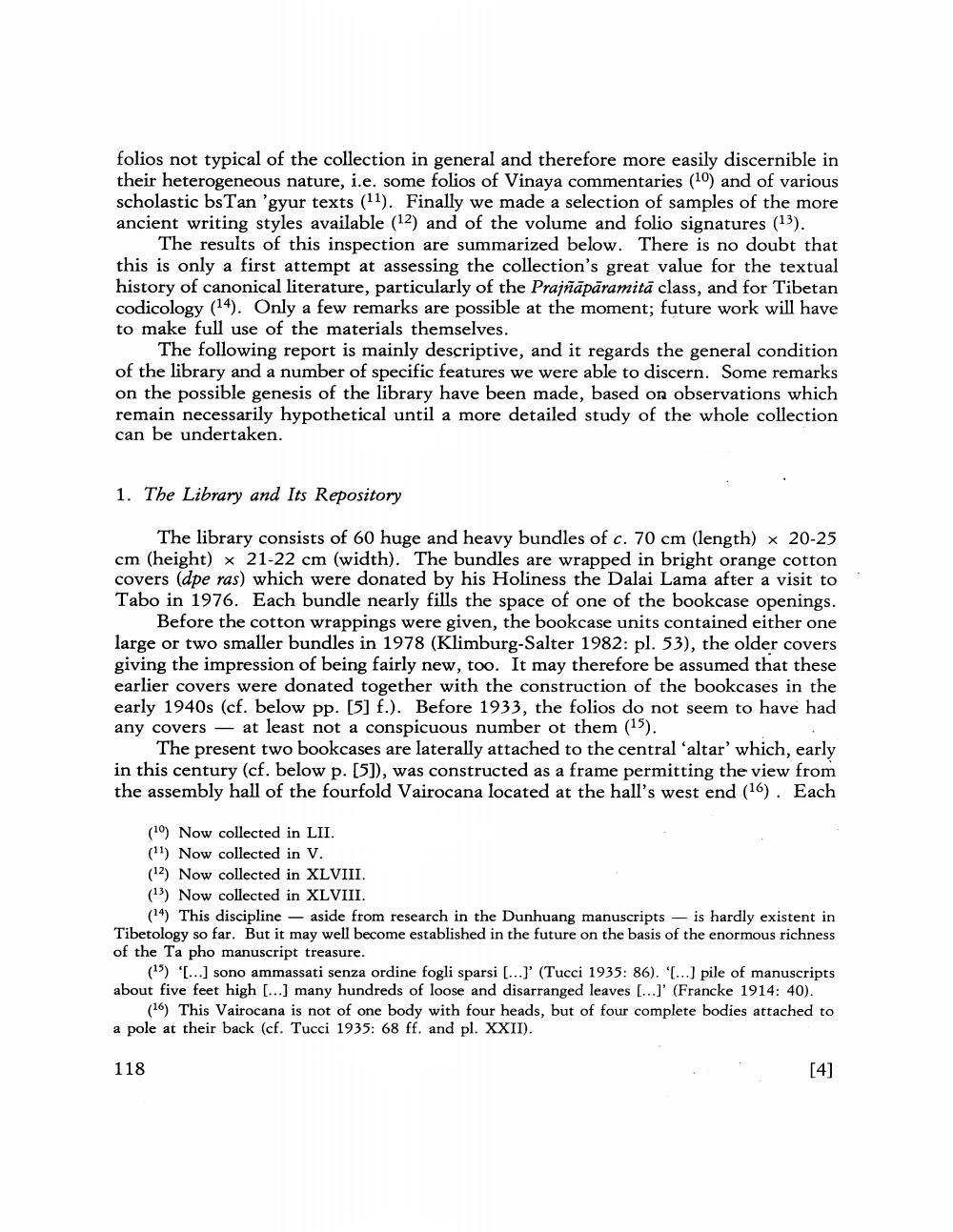Book Title: Report On Kanjur Of Ta Pho Author(s): Ernst Steinkellner Publisher: Ernst Steinkellner View full book textPage 4
________________ folios not typical of the collection in general and therefore more easily discernible in their heterogeneous nature, i.e. some folios of Vinaya commentaries (10) and of various scholastic bsTan 'gyur texts (11). Finally we made a selection of samples of the more ancient writing styles available (12) and of the volume and folio signatures (13). The results of this inspection are summarized below. There is no doubt that this is only a first attempt at assessing the collection's great value for the textual history of canonical literature, particularly of the Prajñāpāramitā class, and for Tibetan codicology (14). Only a few remarks are possible at the moment; future work will have to make full use of the materials themselves. The following report is mainly descriptive, and it regards the general condition of the library and a number of specific features we were able to discern. Some remarks on the possible genesis of the library have been made, based on observations which remain necessarily hypothetical until a more detailed study of the whole collection can be undertaken. 1. The Library and Its Repository The library consists of 60 huge and heavy bundles of c. 70 cm (length) x 20-25 cm (height) x 21-22 cm (width). The bundles are wrapped in bright orange cotton covers (dpe ras) which were donated by his Holiness the Dalai Lama after a visit to Tabo in 1976. Each bundle nearly fills the space of one of the bookcase openings. Before the cotton wrappings were given, the bookcase units contained either one large or two smaller bundles in 1978 (Klimburg-Salter 1982: pl. 53), the older covers giving the impression of being fairly new, too. It may therefore be assumed that these earlier covers were donated together with the construction of the bookcases in the early 1940s (cf. below pp. [5] f.). Before 1933, the folios do not seem to have had any covers — at least not a conspicuous number ot them (15). The present two bookcases are laterally attached to the central 'altar' which, early in this century (cf. below p. [5]), was constructed as a frame permitting the view from the assembly hall of the fourfold Vairocana located at the hall's west end (16). Each (19) Now collected in LII. (11) Now collected in V. (12) Now collected in XLVIII. (13) Now collected in XLVIII. (14) This discipline – aside from research in the Dunhuang manuscripts – is hardly existent in Tibetology so far. But it may well become established in the future on the basis of the enormous richness of the Ta pho manuscript treasure. (15) '[...] sono ammassati senza ordine fogli sparsi [...]' (Tucci 1935: 86). '(...) pile of manuscripts about five feet high [...] many hundreds of loose and disarranged leaves [...]' (Francke 1914: 40). (16) This Vairocana is not of one body with four heads, but of four complete bodies attached to a pole at their back (cf. Tucci 1935: 68 ff. and pl. XXII). 118 [4]Page Navigation
1 2 3 4 5 6 7 8 9 10 11 12 13 14 15 16 17 18 19 20 21 22
